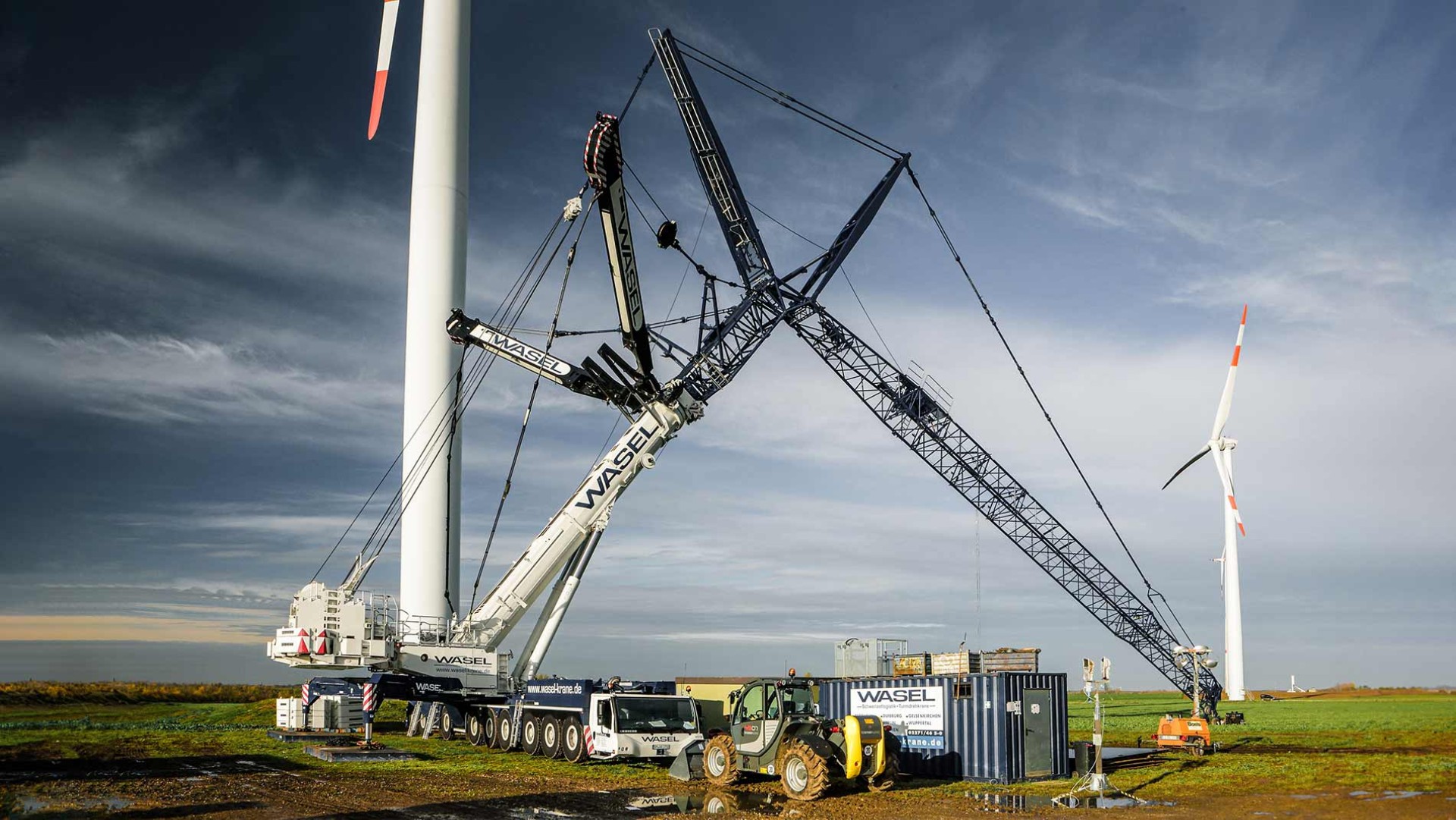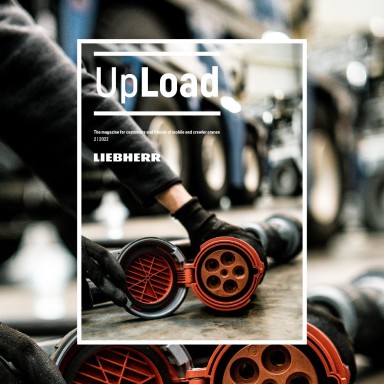 Mobile and crawler cranes
Mobile and crawler cranes
6 minutes - magazine 01 | 2023
Find out about the wind forecast
The energy generated by wind is good for the climate revolution, but often makes life difficult for crane operators.
Prompt action
They have to take a series of factors into account to prevent accidents, particularly when handling loads with large surface areas. Our tip today looks at a subject which is sadly often underestimated – the effects of wind when the crane is not even operating or at least does not have a load on its hook. Christof Maichel, a Trainer at our Ehingen Training Centre explains what to look out for.
My tip can be summed up in a single sentence. Never leave the crane cab without first finding out what the wind speed is doing. This may sound slightly excessive but it is enormously important because mobile and crawler cranes provide the wind with large surface areas to attack even without a load. Even with lattice booms, their surface areas may be several hundred square metres.

Christof Maichel - Technical Trainer
Digital assistants
There are some great apps which provide fast access to the local wind speed forecasts, including “Windfinder” and “Windy”. One very important point to remember is that the gusting speeds are absolutely vital. These values are also shown in the apps.
The next thing you must do is look at the crane documentation for the “Out of service wind” (wab) values in the wind speed tables. These tables contain the maximum gusting speeds for a range of configurations. The main factors in this respect are the boom lengths (HA/HI), main boom angle (WHA) and auxiliary boom angle (WHI). In addition, the total ballast (OWB) and the hook block (HKFL) must be set up as shown in the wab table.
The wind speed (VWMAX) shown in the wab table indicates that the crane system can be affected by this wind over the full 360°. The basis for this is that according to this table, the centre of gravity of the entire crane system should be as central and as low as possible.
As an aside, when you leave the crane, you must make sure that there is no load on the hook. And there is another important point – it is the wind speed at the boom head that counts, not at an altitude of 10 metres, which is what most wind speed apps quote. The conversion factor for different altitudes is shown in our brochure entitled “Influence of wind during crane operation”.
Find out more:
Brochure entitled “Influence of wind during crane operation“
Avoid the worst case scenario
If the forecast wind gust speed exceeds the maximum, the boom must be lowered. But, of course, you must ask whether that can actually be done safely. We have erection and take-down charts (aat) for this purpose, showing the maximum wind speeds for all cases.
If these are currently exceeded and if the wind forecast shows that things may calm down briefly, you should position the boom with its back to the wind by pressing the “slewing gear release” pedal. In some situations, this is the best action a crane operator can take to turn his boom system into the wind (back wind). Only if it is in this position will our load moment limiter (LMB) be able to calculate and display the additional stresses.
If, however, the wind continues to strengthen and the boom cannot then be lowered, the worst case scenario comes into play – get out of the crane and cordon off a wide area around it. Personnel safety takes absolute priority.
But you should not let things get that far – find out about the expected wind speeds early on. And lower the boom sufficiently early as well, as safety always comes first.
This article was published in the UpLoad magazine 01 | 2023.





